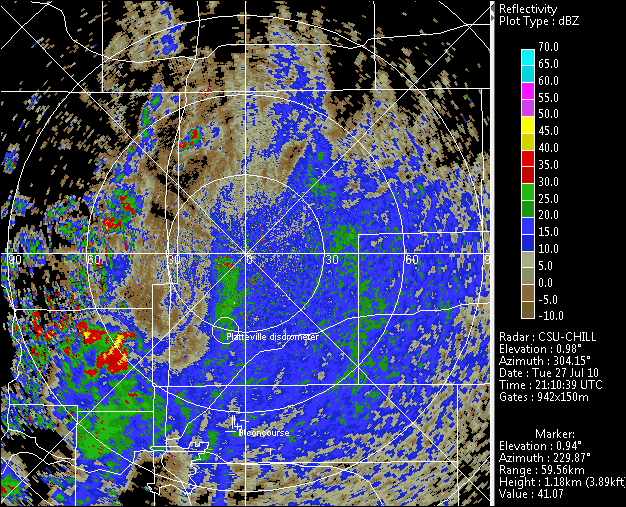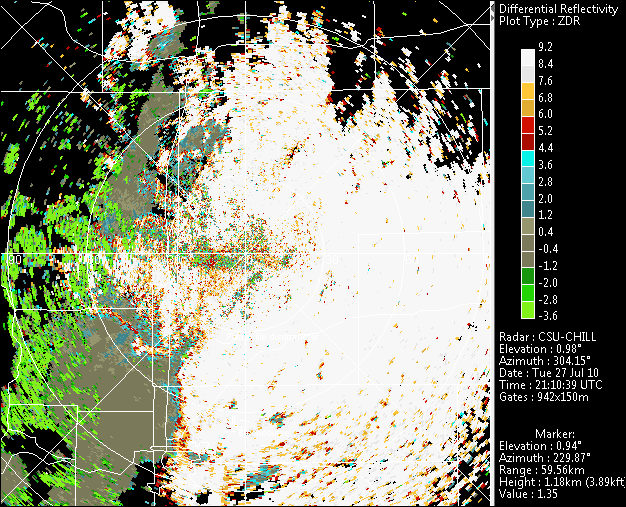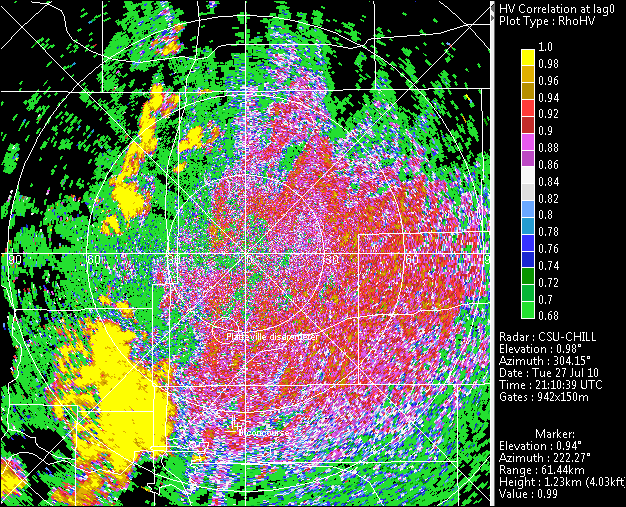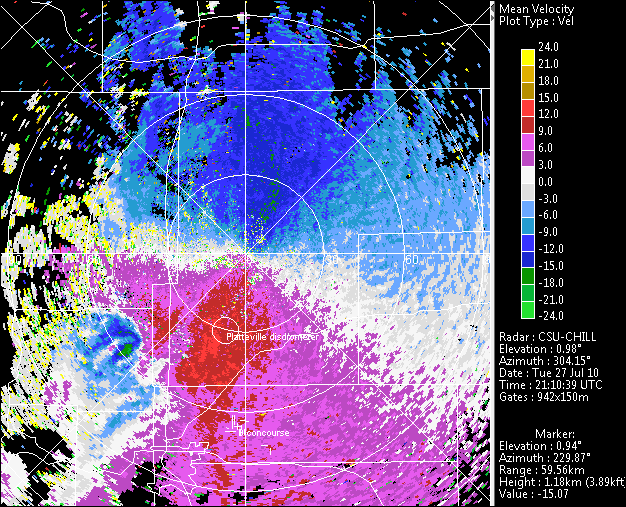WXlog/20100727 Summer PBL
By late July, insects have developed fairly large body sizes with distinctly oblate shapes. This causes the S-band Zdr values returned from typical afternoon "clear air" echoes in the boundary layer to become very positive (often +9 db and above.) This characteristic is shown in the example images below. At the time of this PPI scan, rain showers were in progress over Boulder County (~60 km SW of CHILL). The less oblate raindrop shapes vs. the insect shapes produces less positive Zdr levels. Also, the H to V signal return correlation coefficient (rhoHV) is consistently higher in the rain than in the insect regime. Finally, outflow from the rain showers locally alters the large scale northly flow shown by the radial velocity pattern in the boundary later.



